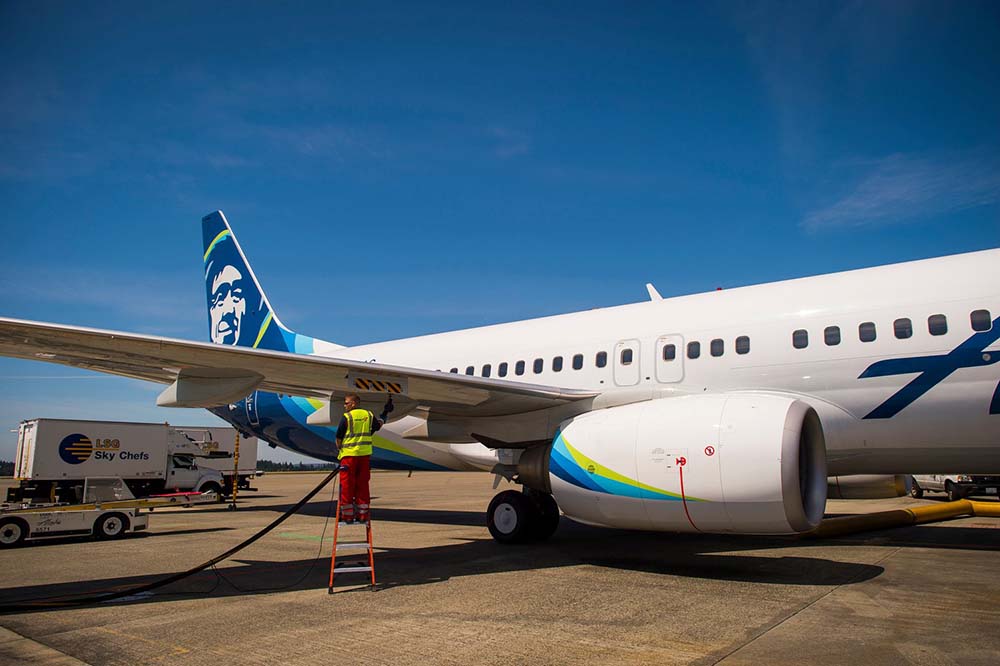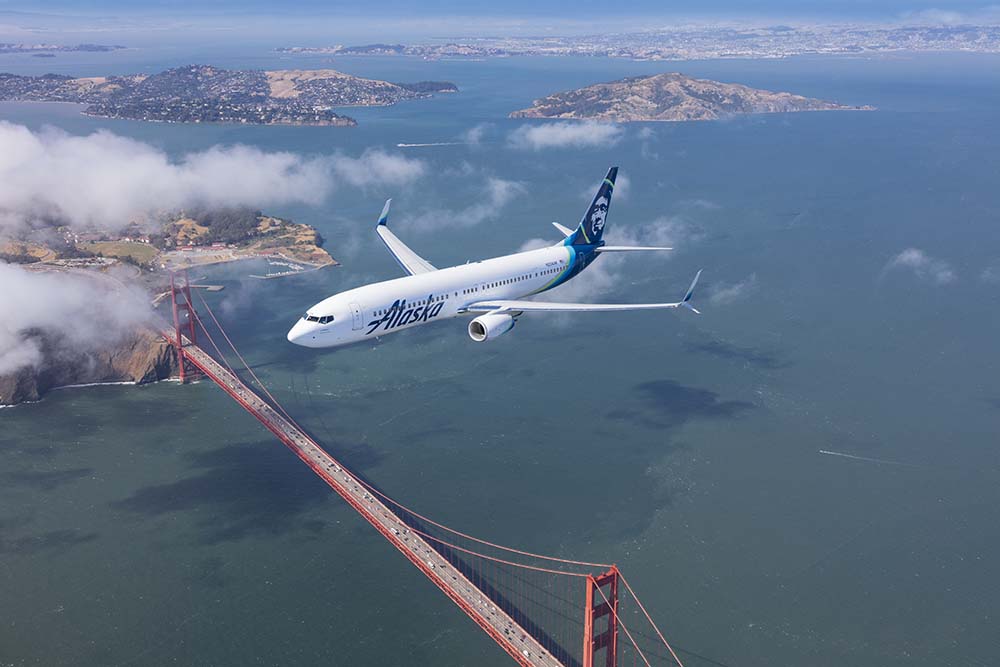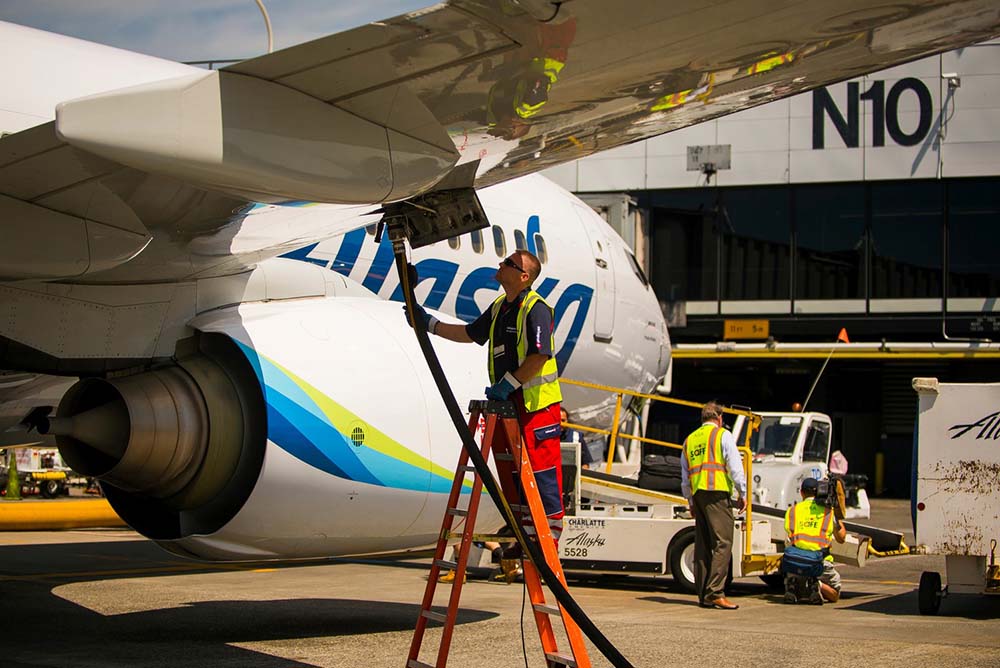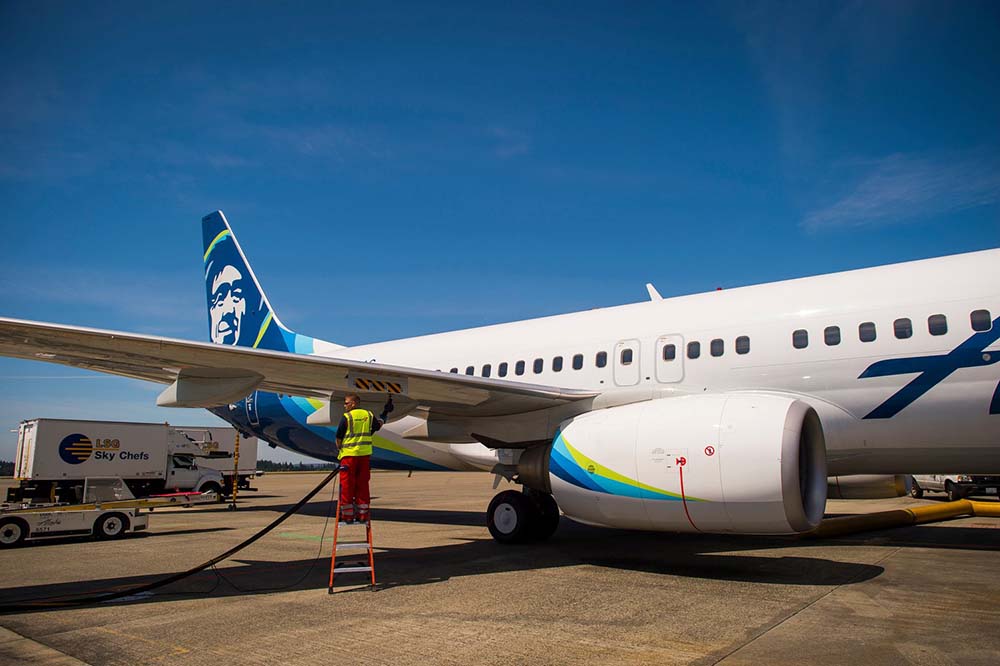Alaska Airlines and Microsoft are making travel a little greener—see how you can reduce your carbon footprint
Share

Sustainable aviation fuel will cover Microsoft employee travel from Seattle to and from San Francisco, San Jose and Los Angeles.
Alaska Airlines and Microsoft will fly more sustainably thanks to the use of sustainable aviation fuel (SAF) supplied by SkyNRG to cover Microsoft employee travel on the routes they fly most. Microsoft has ambitious sustainability goals, including a commitment to be carbon negative by 2030 and remove all historical carbon emissions by 2050. We’re grateful for the opportunity to support them on this path.
SAF is produced from sustainable resources, including feedstocks and waste oils, and is an important way for the aviation industry to reduce CO2 emissions on a life cycle basis.
As an airline, we are responsible for reducing the negative environmental impacts of air travel in our community and the communities where we operate. To do that, we’re focused on ongoing efforts to improve our operational efficiency, including growing our use and the market for SAF,” said Diana Birkett Rakow, vice president of external relations at Alaska Airlines. “We believe deeply in the transformational benefits of air travel. It’s what connects people—and helps communities worldwide grow and thrive. We know to continue to deliver these benefits, we must operate sustainably.”

We’re excited about this milestone and remain committed to a long journey of reducing carbon emissions, including creating a marketplace for SAF, especially here in the Pacific Northwest. More than a decade ago, we were one of the first airlines to demonstrate the use of SAF in passenger travel, and by managing a fuel-efficient fleet and using technology to make flight paths most efficient, we have reduced its intensity target of Greenhouse Gas emissions by 16% since 2012. But there is a lot more work to do, and many partners on this journey, from airports like our home hub SEA to California hubs and research institutions.
So today, we also announced a two-year investment with Washington State University to support additional research at the WSU-PNNL Bioproducts Institute to advance the mid- and long-term development of SAF as an economically viable option, particularly in the Pacific Northwest.
What if I don’t work for Microsoft, but want to offset your carbon footprint? Good news! Travelers can invest in carbon offsets from  our new partner The Good Traveler, which is then invests in carbon reduction projects that restore the climate balance. Since the inception of the program, more than 667 million miles have been flown and with the help of The Good Traveler – who also partners with airports from SEA to SFO and beyond – and 229 million pounds of CO2 has been removed from the air through funding projects like planting trees, protecting habitats, composting waste and using renewable energy.
our new partner The Good Traveler, which is then invests in carbon reduction projects that restore the climate balance. Since the inception of the program, more than 667 million miles have been flown and with the help of The Good Traveler – who also partners with airports from SEA to SFO and beyond – and 229 million pounds of CO2 has been removed from the air through funding projects like planting trees, protecting habitats, composting waste and using renewable energy.



